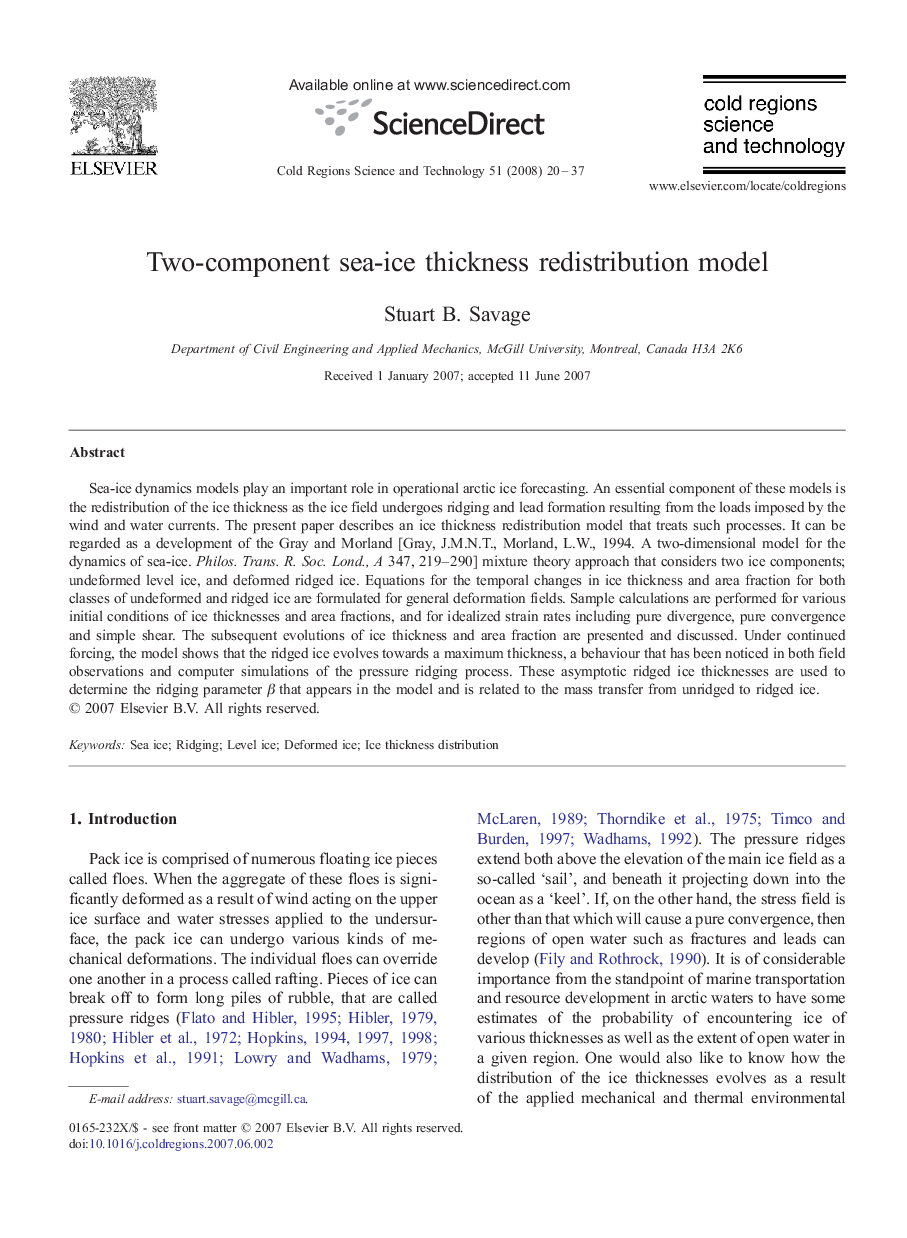| Article ID | Journal | Published Year | Pages | File Type |
|---|---|---|---|---|
| 4676705 | Cold Regions Science and Technology | 2008 | 18 Pages |
Sea-ice dynamics models play an important role in operational arctic ice forecasting. An essential component of these models is the redistribution of the ice thickness as the ice field undergoes ridging and lead formation resulting from the loads imposed by the wind and water currents. The present paper describes an ice thickness redistribution model that treats such processes. It can be regarded as a development of the Gray and Morland [Gray, J.M.N.T., Morland, L.W., 1994. A two-dimensional model for the dynamics of sea-ice. Philos. Trans. R. Soc. Lond., A 347, 219–290] mixture theory approach that considers two ice components; undeformed level ice, and deformed ridged ice. Equations for the temporal changes in ice thickness and area fraction for both classes of undeformed and ridged ice are formulated for general deformation fields. Sample calculations are performed for various initial conditions of ice thicknesses and area fractions, and for idealized strain rates including pure divergence, pure convergence and simple shear. The subsequent evolutions of ice thickness and area fraction are presented and discussed. Under continued forcing, the model shows that the ridged ice evolves towards a maximum thickness, a behaviour that has been noticed in both field observations and computer simulations of the pressure ridging process. These asymptotic ridged ice thicknesses are used to determine the ridging parameter β that appears in the model and is related to the mass transfer from unridged to ridged ice.
